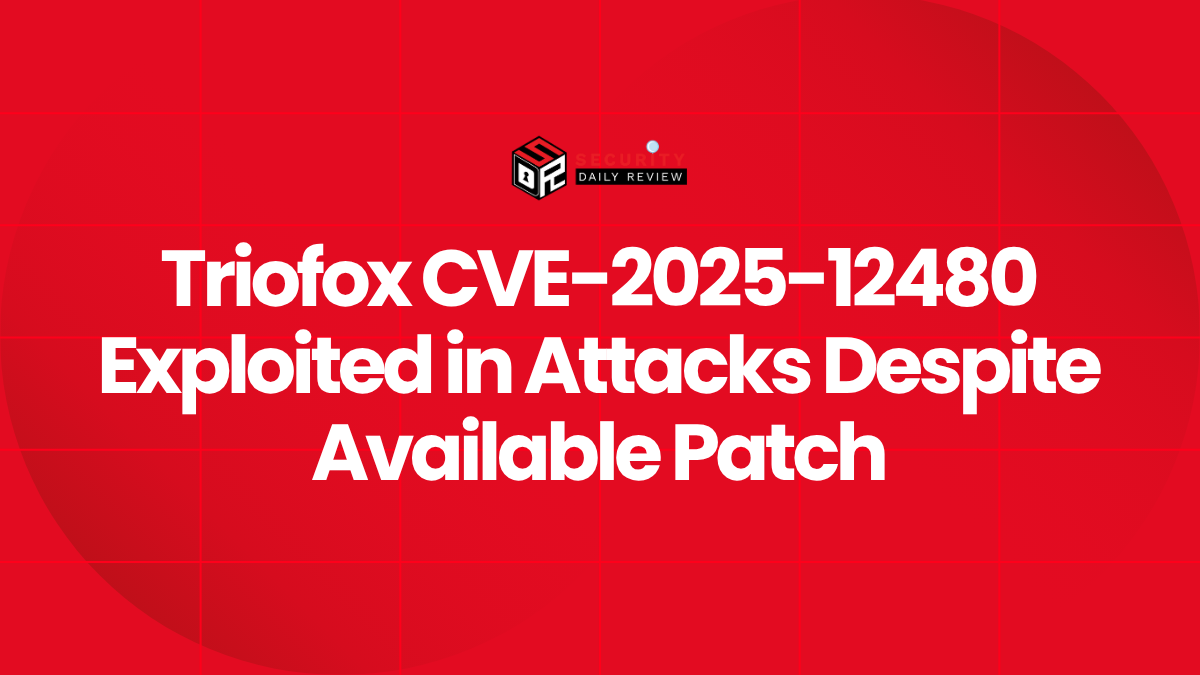A critical vulnerability in a remote access platform has drawn the attention of threat actors seeking to exploit enterprise infrastructure. Security researchers from Google’s Mandiant division have confirmed active exploitation of a now-patched authentication bypass flaw in Gladinet’s Triofox file-sharing and access system, tracked as CVE-2025-12480.
With a CVSS (Common Vulnerability Scoring System) base score of 9.1, this vulnerability presents a severe risk to exposed environments, especially given its capacity for arbitrary payload execution through unauthorized admin access. Though originally labelled as an “n-day”—meaning public but not widespread—vulnerability, it now stands confirmed as a significant attack vector in active threat campaigns.
Triofox Flaw Enables Authentication Bypass and Code Execution
The core of CVE-2025-12480 lies in improper request validation within Triofox’s configuration management components. Successful exploitation allows adversaries to completely circumvent authentication mechanisms, providing direct access to server configuration pages typically reserved for administrators. From there, attackers can upload arbitrary payloads, ultimately leading to the remote execution of malicious code.
This vulnerability—now patched by Gladinet—was particularly dangerous before detection due to its nature as an n-day exploit. Attackers took advantage of the lag between the patch’s release and broad organizational adoption to compromise unpatched systems.
Mandiant Observed In-the-Wild Exploitation as Early as February
According to Mandiant, exploitation activity tied to CVE-2025-12480 was detected in the wild as early as February 2024. The threat intelligence unit observed indicators consistent with real-world, malicious use of the flaw, marking its transition from theoretical to operational.
“We identified exploitation consistent with this vulnerability in post-patch environments, where organizations had delayed patch implementation,” stated a Mandiant spokesperson.
Key indicators of compromise (IOCs) include unauthorized uploads targeting system directories, unusual access to configuration endpoints, and the sudden appearance of unfamiliar scripts within the Triofox file system.
Threat Landscape Implications for Organizations
The exploitation of CVE-2025-12480 raises broader concerns around lagging patch adoption and cloud platform exposure. Triofox is often used by small and medium businesses (SMBs) for hybrid cloud file access—entities that often lack formal vulnerability management programs.
This vulnerability represents an opportunity for attackers to gain footholds in enterprise environments via:
- Uploading and executing backdoors
- Harvesting internal data shared via Triofox
- Moving laterally into other components of the network
In one observed case, exploitation led to the deployment of known Cobalt Strike payloads, a tool often used in advanced persistent threat (APT) operations.
Vulnerability’s Exposure Risk Highlights the Importance of Timely Patching
Security experts emphasize that while CVE-2025-12480 is now technically “patched,” its continued exploitation underscores the dangers associated with delayed vulnerability remediation. Attackers routinely scan for devices running outdated software—even on cloud-based platforms—and the ease of exploitation in Triofox puts lagging organizations at significant risk.
Recommended Defensive Measures for Security Teams
Given the severity of this flaw and the confirmed incidents of exploitation, security teams are urged to validate their patching status immediately. Gladinet has released security advisories and updates to fully mitigate CVE-2025-12480, and organizations using Triofox should verify that relevant versions are no longer exposed.
Defenders should also consider the following defensive steps:
- Inventory scanning – Identify deployed Triofox instances within the organization.
- Log analysis – Audit system logs for unauthorized access to configuration pages or suspicious uploads.
- Implement network segmentation – Isolate Triofox platforms from sensitive systems where possible.
- Detection rule updates – Add detection logic for known exploit behavior, such as configuration page enumeration and atypical file uploads.
In addition, endpoint protection systems should be tuned to recognize post-exploitation behavior such as Cobalt Strike beaconing or lateral movement attempts.
Triofox Exploitation Reflects Broader Trends in Threat Actor Behavior
CVE-2025-12480 highlights an increasing trend among threat actors: the rapid adoption and weaponization of even recently patched vulnerabilities. Once disclosed, flaws like this become high-value targets, especially when they offer authentication bypass paired with remote code execution (RCE).
This discovery by Mandiant reflects a broader shift in exploitation timelines where the window between patch release and active exploitation is shrinking dramatically.
Organizations must strive for faster vulnerability response cycles, improved asset discovery, and real-time threat intelligence monitoring to stay ahead of adversaries exploiting n-day vulnerabilities like CVE-2025-12480.









